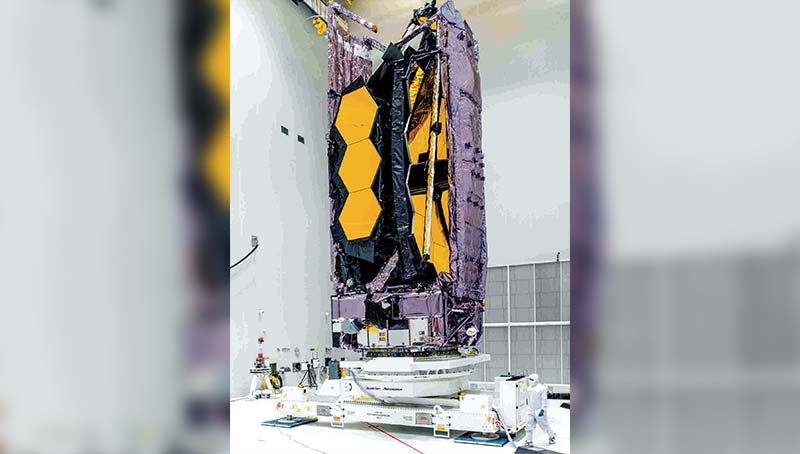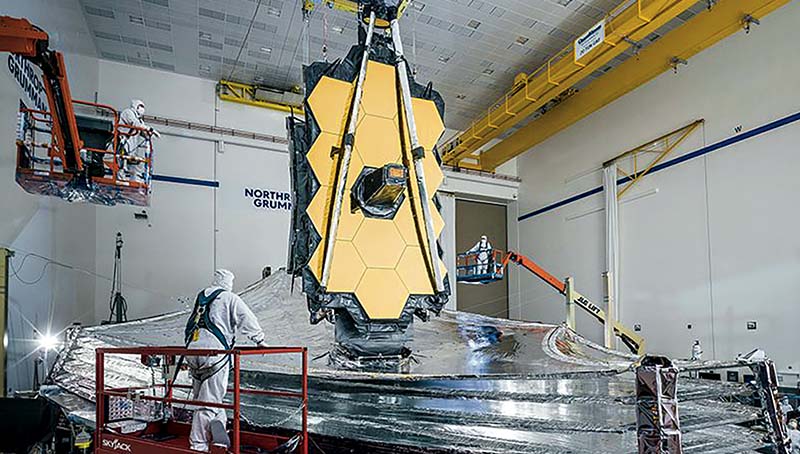This is not the first delay experienced by the telescope, which was originally planned to be launched to space in 2007, since it has suffered several problems related to budgeting, feasibility, complications with component integrations, and more recently, due to COVID-19.
The institution that has led this project since its creation has been NASA, but the European Space Agency has been, and is, a highly valuable ally. Spain, through its Astrobiology Center (CAB, CSIC-INSTA), plays a major part in this mission, since it participated in two out of the four instruments of James Webb.
The NIRSpec instrument (Near Infrared Spectrograph) is an extremely sensitive spectrograph that has been designed and built by ESA in collaboration with Spanish companies of the aerospace sector, which designed important components of the instrument, such as its control electronics, cryogenic wiring and the cover of the optical system.
The versatile MIRI (Mid-Infrared instrument) instrument is a camera, coronagraph and a spectrograph that observes mid-infrared radiation with a wide range of capabilities, and thanks to Spain’s involvement it will be ten to one hundred times more sensitive and will count with an angular resolution 6 to 8 times higher than that of its predecessor’s.

Unlike the Hubble space telescope, which orbits a bit under 600km above sea level, the James Webb telescope will remain at a stationary location approximately 1,500,000 km from our planet. This enormous distance will not leave room for subsequent modifications or repairs. James Webb is an extraordinarily complex scientific instrument that will additionally be subject to extreme stresses. Therefore, it is essential that it is not launched until the technicians are positive that everything will go according to plan.
Let’s hope that there are no more delays this time, so that this scientific instrument can finally head toward space with the highly ambitious goal of significantly expanding our knowledge of the universe.





